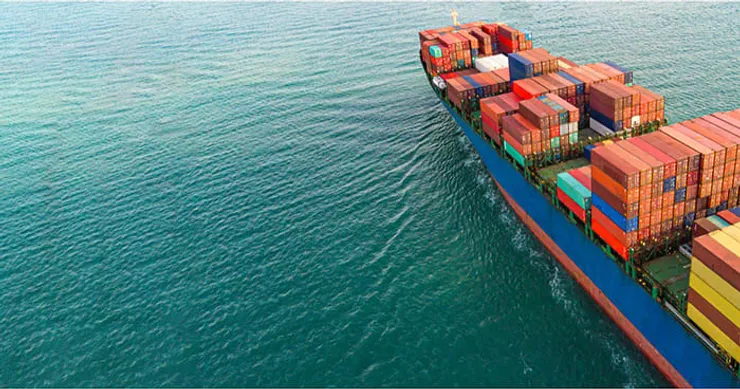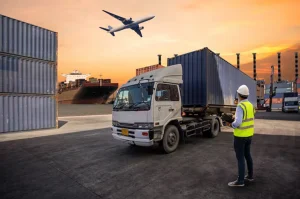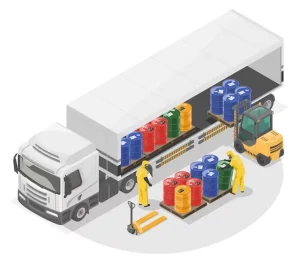Sea freight shipping is the backbone of global trade. It offers a cost-effective way to transport goods in large quantities over long distances. With China being a manufacturing powerhouse, businesses worldwide rely on sea freight to bring in a wide range of products. It’s not just about affordability; it’s also about reliability and the ability to handle various cargo types, including oversized and hazardous materials.
How to find the right sea freight shipping solution?
Efficient and affordable sea freight shipping solutions from China can be critical for businesses looking to import goods from China or export products to China. Here are some steps and tips to help you find the right sea freight shipping solution:
1. Understand Your Shipping Needs:
-
Determine the volume, weight, and nature of your cargo.
-
Identify your shipping timeline and any specific delivery requirements.
-
Know the nearest ports of origin and destination.
2. Choose the Right Shipping Method:
-
Full Container Load (FCL): Ideal for larger shipments, where you can book an entire container, whether it’s a 20-foot (TEU) or 40-foot (FEU) container.
-
Less Than Container Load (LCL): LCL shipping allows you to share a container with other shippers if you don’t have enough cargo to fill a whole container.
-
Break Bulk: This method is used for oversized or unconventional cargo that cannot fit into standard containers. Cargo is loaded individually onto the vessel.
-
Roll-on/Roll-off (RoRo): RoRo shipping is suitable for cargo with wheels, such as automobiles, trucks, and heavy machinery. Cargo is driven onto and off the vessel
-
Temperature-Controlled Shipping (Reefer): Used for perishable goods that require temperature control, such as food and pharmaceuticals.
3. Select a Reputable Freight Forwarder:
-
Look for a freight forwarder with experience shipping to/from China.
-
Check for industry certifications and customer reviews.
-
Ensure they have good relationships with shipping lines and customs authorities.
4. Compare Freight Rates:
-
Obtain quotes from multiple freight forwarders to compare rates and services.
-
Be cautious of very low prices, as they may indicate poor service or hidden fees.
5. Container Types:
-
Choose the right container size for your cargo to optimize cost and space.
-
Common container sizes include 20- and 40-foot containers.
6. Optimize Packaging:
-
Properly pack and palletize your goods to maximize space and reduce the risk of damage.
-
Label and document your cargo accurately.
7. Transit Time vs. Cost:
-
Balance transit time with cost. Faster shipping options often cost more.
8. Customs and Documentation:
-
Ensure all necessary customs documents are in order.
-
Familiarize yourself with Chinese import/export regulations.
9. Insurance:
-
Consider cargo insurance to protect against damage or loss during transit.
10. Track and Trace:
-
Use tracking systems provided by the shipping line or your freight forwarder to monitor your cargo’s status.
11. Plan Ahead:
-
Book your shipments well in advance, especially during peak shipping seasons.
12. Consider Other Transportation Modes:
-
Depending on your cargo and destination, you might want to explore multimodal transport options (e.g., sea-rail or sea-road).
13. Compliance and Regulations:
-
Stay compliant with international shipping regulations, including safety and environmental standards.
Finding efficient and affordable sea freight shipping solutions from China requires research, planning, and careful consideration of your specific needs. By working with experienced partners and optimizing your logistics, you can ensure a cost-effective and reliable shipping process.
Pros & Cons
Efficient and affordable sea freight shipping solutions from China offer various benefits and drawbacks that you should carefully consider to make the right choice for your business. Here are the pros and cons of sea freight shipping:
Pros of Sea Freight Shipping from China:
-
Cost-Effective: Sea freight is often more cost-effective than air freight for large and heavy cargo shipments due to lower transportation costs per unit.
-
Suitable for Bulk Cargo: Sea freight is ideal for transporting bulk goods, raw materials, and oversized items that may not fit in standard containers.
-
Economical for Long Distances: It’s the preferred mode of transport for long-distance international shipping, making it suitable for global trade.
-
Eco-Friendly: Sea freight has a lower carbon footprint compared to air freight, making it a more environmentally friendly option.
-
Reliability: Major shipping lines have regular schedules, making sea freight a reliable option for businesses with predictable shipping needs.
-
Capacity for High Volume: Sea vessels have substantial cargo capacity, making them suitable for high-volume shipments.
-
Flexibility in Container Types: Various container types, including dry containers, refrigerated containers (reefers), flat racks, and open tops, accommodate diverse cargo requirements.
-
Lower Insurance Costs: Insurance premiums for sea freight are typically lower compared to air freight, reducing the overall shipping cost.
Cons of Sea Freight Shipping from China:
-
Slower Transit Times: Sea freight is considerably slower than air freight. Shipping times can range from several weeks to several months, depending on the destination.
-
Unpredictable Delays: Weather, port congestion, and other factors can lead to unpredictable delays in sea freight shipments.
-
Documentation Complexity: Sea freight involves extensive documentation, including bills of lading, customs paperwork, and other forms, which can be complex and time-consuming.
-
Limited Accessibility: Sea freight is limited to ports, so inland destinations may require additional transportation methods, increasing costs and complexity.
-
Customs and Regulatory Compliance: Navigating customs procedures and regulations can be challenging and may lead to delays or fines if not done correctly.
-
Handling Hazardous Cargo: Shipping hazardous materials via sea freight requires compliance with strict regulations and additional safety measures.
Sea freight is a cost-effective and eco-friendly option for shipping goods from China, especially for large, non-perishable cargo over long distances. However, it comes with slower transit times, handling risks, and complex documentation requirements. Careful planning, proper packaging, and working with experienced freight forwarders and shipping providers can help mitigate the drawbacks and ensure a smooth sea freight shipping experience.
Routes
When looking for efficient and affordable sea freight shipping solutions from China, the choice of shipping routes can significantly impact cost, transit time, and overall logistics efficiency. Here are some common sea freight shipping routes from China:
1. Trans-Pacific Route (China to North America):
-
Main Ports in China: Shanghai, Shenzhen, Ningbo, Qingdao.
-
Destination Ports: Los Angeles, Long Beach, New York, Seattle, Vancouver.
-
Key Considerations: This route is commonly used for shipping goods to North America. It can offer relatively efficient and cost-effective options.
2. Asia-Europe Route (China to Europe):
-
Main Ports in China: Shanghai, Ningbo, Qingdao.
-
Destination Ports: Rotterdam, Hamburg, Antwerp, Felixstowe.
-
Key Considerations: The Asia-Europe route is a major trade lane, but transit times can be longer compared to other routes.
3. Trans-Atlantic Route (China to Europe and North America):
-
Main Ports in China: Shanghai, Ningbo, Qingdao.
-
Destination Ports: New York, Halifax, Bremerhaven, Liverpool.
-
Key Considerations: This route is suitable for businesses shipping to both North America and Europe.
4. Intra-Asia Routes (Within Asia):
-
Main Ports in China: Shanghai, Shenzhen, Hong Kong.
-
Destination Ports: Various ports across Asia (e.g., South Korea, Japan, Southeast Asia).
-
Key Considerations: These routes are commonly used for trade within Asia, offering shorter transit times.
5. China to Oceania Route:
-
Main Ports in China: Shanghai, Shenzhen, Ningbo.
-
Destination Ports: Sydney, Melbourne, Auckland, Brisbane.
-
Key Considerations: This route serves the Australian and New Zealand markets.
6. China to Middle East and Africa Route:
-
Main Ports in China: Shanghai, Ningbo, Guangzhou.
-
Destination Ports: Dubai, Jeddah, Durban, Lagos.
-
Key Considerations: These routes are important for trade with the Middle East and Africa.
7. China to South America Route:
-
Main Ports in China: Shanghai, Qingdao, Ningbo.
-
Destination Ports: Santos, Buenos Aires, Valparaiso.
-
Key Considerations: This route connects China with South American markets.
When selecting a shipping route, consider factors like transit time, cost, distance, and the specific needs of your cargo and customers. It’s also essential to work closely with your chosen freight forwarder or shipping line to optimize your logistics and find the most efficient and affordable sea freight solution for your business. Additionally, keep in mind that the availability of routes and shipping options may change over time due to various factors, so staying updated is crucial.
Why Choose Toptrans?
Our Expertise in International Logistics
As an established name in the industry, Toptrans boasts a team of experts well-versed in international logistics. We understand the intricacies of customs regulations, documentation, and port operations. This knowledge ensures that your cargo will move smoothly and swiftly from China to its destination.
Comprehensive Services for Central Asia
Our logistics network extends to Central Asian states, making us a go-to choice for businesses looking to connect with this rapidly growing region. We offer tailored solutions to navigate the unique challenges of these markets.
Global Supply Chain Solutions
Toptrans is not just a transportation company; we are a partner in your global supply chain. We work with you to optimize your logistics processes, reducing costs and ensuring timely deliveries.
Safe and Reliable Shipping
When it comes to sea freight, safety is paramount. We prioritize the security of your cargo and maintain a rigorous maintenance schedule for our fleet. With us, you can trust that your goods will arrive in perfect condition.
Setting Sail with TopTrans 🚢
Safe and Timely Cargo Transportation 🛡️⏰
Safety and punctuality are our top priorities. We take every measure to safeguard your cargo during transit, and our well-maintained fleet ensures timely deliveries.
Diverse Transportation Options 🌉🏞️
No matter your cargo’s size or type, we have the right transportation solution. From standard containers to specialized equipment, TopTrans is equipped to handle it all.
Handling Special Cargo 🧳🔒
We understand that not all cargo is ordinary. TopTrans has experience transporting sensitive and hazardous goods, including military shipments, with the utmost care and compliance.
TopTrans: Your Gateway to Georgia 🇬🇪
Covering Key Locations 🏙️🏖️🏪
Our transportation network extends across Georgia, encompassing vital locations such as Tbilisi, Batumi, and Poti. This extensive coverage ensures your cargo reaches its final destination efficiently.
Keeping You Informed 📢🚚
Our well-functioning update system keeps you in the loop at all times. You’ll stay informed about your cargo’s status, so you can plan accordingly.
Global Reach 🌏🌐
TopTrans operates in multiple directions, serving European Union countries, Turkey, Central Asian States, Ukraine, and China. Our adaptability and efficiency make us a preferred choice for partners seeking alternative transport solutions amid geopolitical developments.
Transparent Pricing and Service Fees 💰💼
Our pricing structure is transparent and flexible. It is determined based on individual cargo characteristics, the chosen route, type of transportation, and any additional services you may require. You’ll always know what to expect with our upfront quotes.
Customer Service: Your Partner in Transit 🤝📞
Our dedicated customer service team is your partner in transit. Whether you need information, quotes, or assistance with an ongoing shipment, we’re just a call or email away. Don’t hesitate to reach out; we’re here to help.








